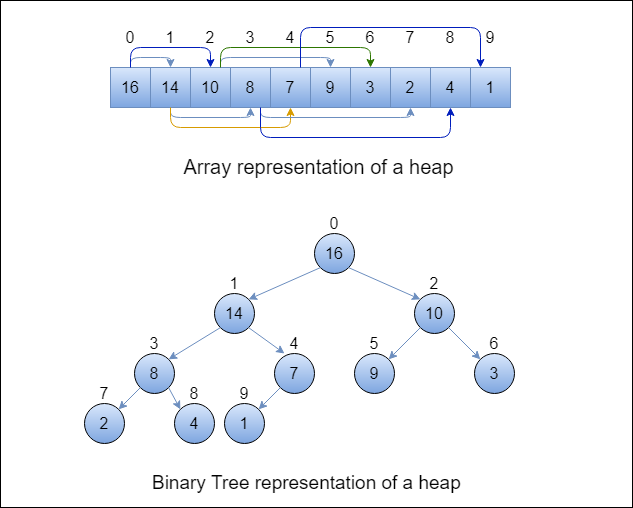Heapsort
NOTE: Your Device may work slower on a large Dataset!
-
-
Complexity Analysis
Time Complexity: O(n log n)
Space Complexity: O(1)
How it works
Heap sort is based exclusively upon a binary heap data structure, where we find the largest element and sort it to the end of our unsorted collection. We use the properties of a complete binary tree to sort our collection efficiently.

Source: https://miro.medium.com/v2/resize:fit:1266/1*IJDDOZOsFGLpf445qo1XKw.png
Pseudocode Implementation
Heapify(A as array, n as int, i as int) { max = i leftchild = 2i + 1 rightchild = 2i + 2 if (leftchild <= n) and (A[i] < A[leftchild]) max = leftchild else max = i if (rightchild <= n) and (A[max] > A[rightchild]) max = rightchild if (max != i) swap(A[i], A[max]) Heapify(A, n, max) } // Initialize n as Length of Array Heapsort(A as array, n as int) { for i = n/2 downto 1 Heapify(A, n ,i) for i = n downto 2 exchange A[1] with A[i] A.heapsize = A.heapsize - 1 Heapify(A, i, 0) }
Source: https://fullyunderstood.com/pseudocodes/heap-sort/
-

Sort Visualizer